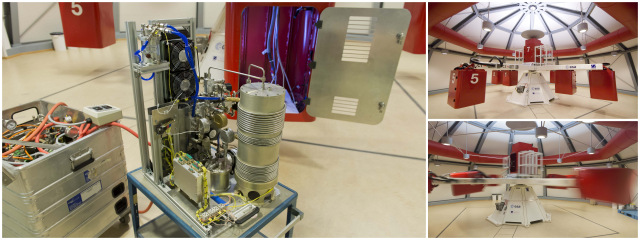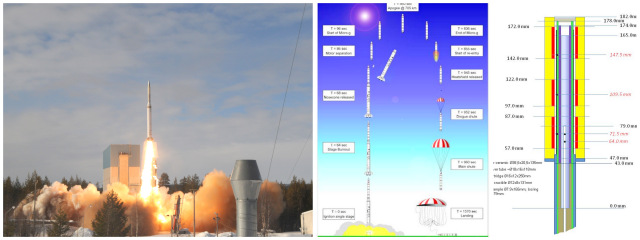Gravity Dependence of Columnar to Equiaxed Transition in Gamma TiAl Alloys (GRADECET)
Project coordinatorDr. Tony Robinson
Email: [javascript protected email address]
Tel: +353 1 896 3919
Dr. Shaun McFadden
Email: [javascript protected email address]
Tel: +44 28 7167 5653
Dr. Robin Patrick Mooney
Email: [javascript protected email address]
Tel: +353 1 896 2396

Ms. Sara Battaglioli
Description (of Ms. Battaglioli’s PhD)The aim of the present work, carried on in the context of the GRADECET (Gravity Dependence of CET in Peritectic TiAl Alloys) project, is to develop some numerical models to study solidification of alloys in processes with motion. The project focuses, in particular, on the Bridgman technique and solidification in centrifuges. The scope of this investigation is to understand mechanisms and processing parameters which lead to the formation of different grain structures, i.e. columnar or equiaxed, due to their influence on the mechanical properties of the final product. Bridgman furnaces are useful in this context, since the solidification process and parameters can be carefully controlled. On the other hand, the interest in solidification in centrifuges is driven by the importance of centrifugal casting as a manufacturing route for TiAl-based components. A simple 2D axisymmetric model is proposed here, for the case of Bridgman furnace solidification; the model is applied to a problem from the literature, solved with a 1D hybrid front tracking model, for comparative purposes. The novelty of the model is the possibility to capture the presence of radial heat flow as well as the axial ones, however its utility is limited by the fact that it does not distinguish different grain structures below the liquidus temperature. An algorithm for the extension of this model to include a front tracking technique is then presented. With this modelling approach it is possible to capture the development of the columnar grain region and the undercooled liquid zone, with the potential to model the columnar to equiaxed transition in the sample. Afterwards, a methodology for the development of a front tracking model for the solution of the problem of solidification in centrifuges is given.

Dr. Robin Patrick Mooney
Description (of Dr. Mooney’s PhD)The Bridgman furnace is widely used in industry and research, mainly because it provides a means to directionally solidify materials in a controlled manner, so that the resulting microstructure, and hence material properties, can be manipulated. This thesis details, firstly, the development and verification of a numerical Front Tracking Model (FTM) to track the position of, and growth conditions at, the columnar front during transient directional solidification in a Bridgman furnace; and, secondly, its application to experiments investigating Columnar to Equiaxed Transition (CET) in a gamma TiAl multicomponent hypoperitectic alloy. Previous FTMs have been applied in fixed grid numerical domains where the solidifying material—normally of hypoeutectic composition—is contained within that domain throughout simulations; the model demonstrated here accounts for movement of material through the domain and is adapted for hypoperitectic solidification. The model is applied, firstly, to characterise a Bridgman furnace in terms of heat transfer coefficients and, secondly, to simulate solidification conditions at, and ahead of, the growing columnar front during a unique set of experiments where Bridgman and power down modes of furnace operation are combined in series. The simulations carried out provide valuable insight, specifically, into the growth conditions that lead to CET in a multicomponent gamma TiAl alloy currently of interest to the aerospace industry; and, more generally, into the dynamics of the transient power down solidification process. The results from this work will be used in preparations for planned directional solidification experiments, using a similar gamma TiAl multicomponent alloy, on-board the European Space Agency MAXUS-9 sounding rocket (in microgravity) where a power down technique is employed. The model can be applied elsewhere, in industry and research, to provide insight into solidification conditions occurring in existing Bridgman processes and in the design of new furnaces.
Funding Body
